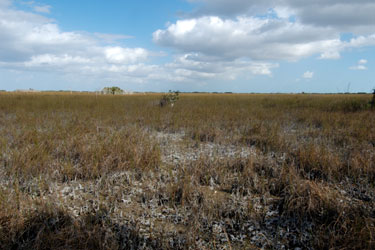
|

Wet Prairie
Wet prairie communities are found throughout the entire
In the wet prairie, the dry season brings about the evaporation of water and exposure of soils. This causes fish to seek refuge in deeper areas such as sloughs, ponds, canals, or solution holes. If fish are not able to make it to one of these refuges they are often concentrated into pools of water which then attract in large flocks of wading birds to feed on the abundant prey. This part of the yearly cycle also corresponds with the wading birds' nesting season making food readily available for their young chicks. As the wet season rains flood the prairie again, fish populations explode and repopulate the prairie. |
